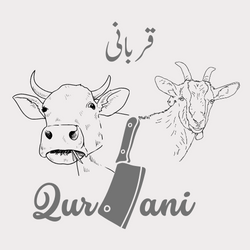## Introduction to QurbaniQurbani, also known as Udhiyah, is a significant religious practice observed by Muslims around the world. It involves the sacrifice of an animal during the Islamic month of Dhul Hijjah, specifically on the days of Eid al-Adha. This act of worship holds immense importance in Islam, representing the obedience and devotion of Prophet Ibrahim (Abraham) to Allah.
The Religious Significance of Qurbani
The ritual of Qurbani holds a deep religious significance in Islam. It commemorates the willingness of Prophet Ibrahim to sacrifice his son, Ismail, as an act of obedience to Allah's command. As the story goes, just as Prophet Ibrahim was about to sacrifice his son, Allah replaced Ismail with a ram, symbolizing the acceptance of his devotion. This event highlights the importance of submission to the will of Allah and the ultimate reward that awaits those who remain steadfast in their faith.
Qurbani in Islamic History
Qurbani traces its origins back to the time of Prophet Ibrahim and his son Ismail. It is believed that this practice was established by Allah Himself as a form of worship and a means of drawing closer to Him. The act of sacrificing an animal serves as a reminder of the great sacrifice made by Prophet Ibrahim and the profound faith he possessed. This historical event has been immortalized in the Quran and serves as a testament to the importance of Qurbani in the lives of Muslims.
Qurbani in Different Cultures and Countries
Qurbani is not limited to a specific region or culture; it is a universal practice among Muslims worldwide. While the core principles remain the same, the rituals and traditions associated with Qurbani may vary across different cultures and countries. In some regions, communal Qurbani is organized, where members of the community contribute collectively to perform the sacrifice. This fosters a sense of unity and solidarity among Muslims, emphasizing the importance of sharing and caring for others.
The Process of Qurbani
The process of Qurbani involves several steps, beginning with the selection of a suitable animal. According to Islamic teachings, animals such as camels, cows, goats, and sheep are permissible for sacrifice. The animal must meet specific criteria, including being of a certain age and in good health. On the day of Eid al-Adha, the animal is slaughtered following the prescribed method, ensuring a swift and humane sacrifice. The meat is then divided into three parts, with one part distributed to the needy, another shared among family and friends, and the final portion retained for personal consumption.
The Types of Animals Suitable for Qurbani
In Islam, there are specific guidelines regarding the types of animals suitable for Qurbani. The four main animals permissible for sacrifice are camels, cows, goats, and sheep. Each animal has its own significance and can be chosen based on personal preference and affordability. Camels are often considered the most prestigious choice, followed by cows, goats, and sheep. It is important to ensure that the chosen animal meets the necessary requirements in terms of age, health, and condition to fulfill the obligations of Qurbani.
Guidelines for Performing Qurbani
Performing Qurbani requires adherence to certain guidelines to ensure its validity and acceptance. Muslims should be of sound mind and have reached the age of maturity. It is recommended to perform Qurbani on the days of Eid al-Adha, specifically after the Eid prayer. The intention to perform Qurbani should be made with sincerity and devotion, recognizing it as an act of worship and obedience to Allah. The animal chosen for sacrifice must meet the prescribed criteria, and the process should be carried out in accordance with Islamic principles and teachings.
The Distribution of Qurbani Meat
One of the key aspects of Qurbani is the distribution of the meat among those in need. Islam places great emphasis on charity and caring for the less fortunate, and Qurbani provides an opportunity to fulfill this obligation. The meat obtained from the sacrificed animal is divided into three parts: one-third is given to the poor and needy, one-third is shared with family and friends, and one-third is retained for personal consumption. This ensures the equitable distribution of resources and fosters a sense of compassion and empathy within the community.
Qurbani and Charity
Qurbani serves as a powerful reminder of the importance of charity in Islam. It encourages Muslims to be generous and compassionate towards those in need, reflecting the teachings of Prophet Muhammad. The act of sacrificing an animal for Qurbani is an act of worship, but it also serves as a means of providing sustenance and support to those who are less fortunate. By participating in Qurbani, Muslims are reminded of their duty to alleviate the suffering of others and to contribute positively to society.
Conclusion: The Importance of Qurbani in Islam
In conclusion, Qurbani holds great significance in Islam, symbolizing the obedience and devotion of Prophet Ibrahim to Allah's command. This act of worship not only commemorates a historical event but also serves as a means of drawing closer to Allah and practicing compassion and charity. Qurbani is a universal practice observed by Muslims around the world, fostering a sense of unity and solidarity within the community. By understanding the significance of Qurbani and adhering to its guidelines, Muslims can strengthen their faith and fulfill their religious obligations. May the observance of Qurbani bring blessings, peace, and prosperity to all who partake in this sacred ritual.
CTA: If you found this comprehensive guide on Qurbani helpful, you may also be interested in exploring other aspects of Islamic worship and traditions. Visit our website to discover more insightful articles and resources that can further enhance your understanding of Islam.


